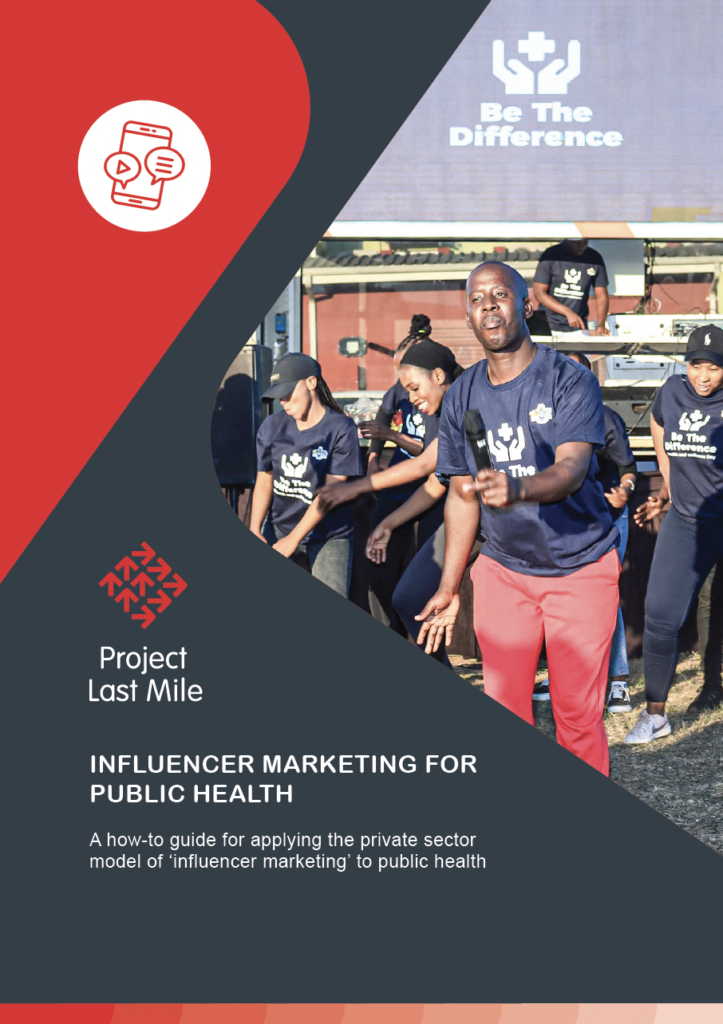
How-to guide
A Project Last Mile guide to applying the private sector model of ‘influencer marketing’ to public health
Many successful consumer brands, such as Coca-Cola, Nike, and Microsoft, have long partnered with influencers to help market their products. Over time, influencer marketing has become a critical tool in companies’ marketing wheelhouses.
Influencer engagement through community leaders or social media influencers is also commonly used in public health to promote health service uptake and behavior change. While influencer marketing has been leveraged to support public health outcomes in certain settings, there are further lessons that can be leveraged from the private sector to strengthen the impact of these efforts within the public health sector.
Project Last Mile recently released a resource for public health communicators and social behavior change practitioners – INFLUENCER MARKETING FOR PUBLIC HEALTH: A how-to guide for applying the private sector model of ‘influencer marketing’ to public health.
The guide is based on Project Last Mile’s experience of conducting public health campaigns with different influencers, from faith-based leaders to TikTok and radio DJs, as well as micro and nano social media influencers. Project Last Mile applied a private-sector approach to influencer marketing across public health campaigns in South Africa and Eswatini during the COVID-19 pandemic to drive COVID-19 vaccinations.
Although commercial businesses and brands nowadays typically use influencers on digital channels such as social media, this guide takes a broader view of the term ‘influencer’ and explains when, why, and how best to use a private sector approach to influencer marketing more broadly, in the public health sector.
To download the guide, click here.
DISCLAIMER: This guide is funded and supported by USAID. The content and information provided on this website are the responsibility of Project Last Mile and are not official United States government information and do not necessarily represent the views or positions of USAID or the United States Government.